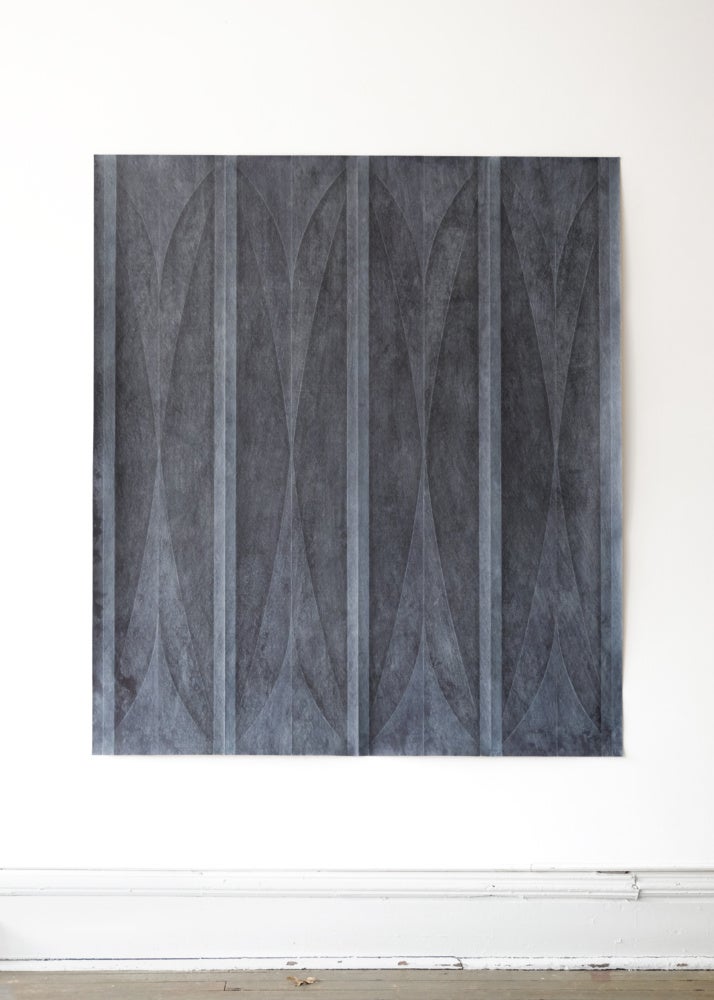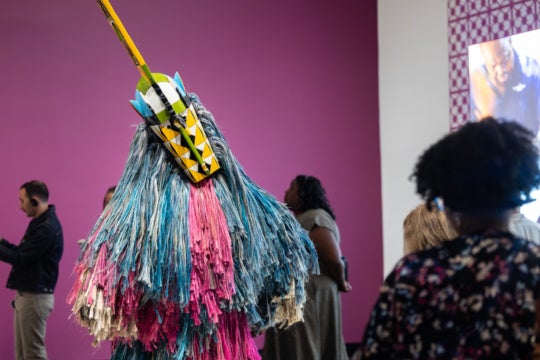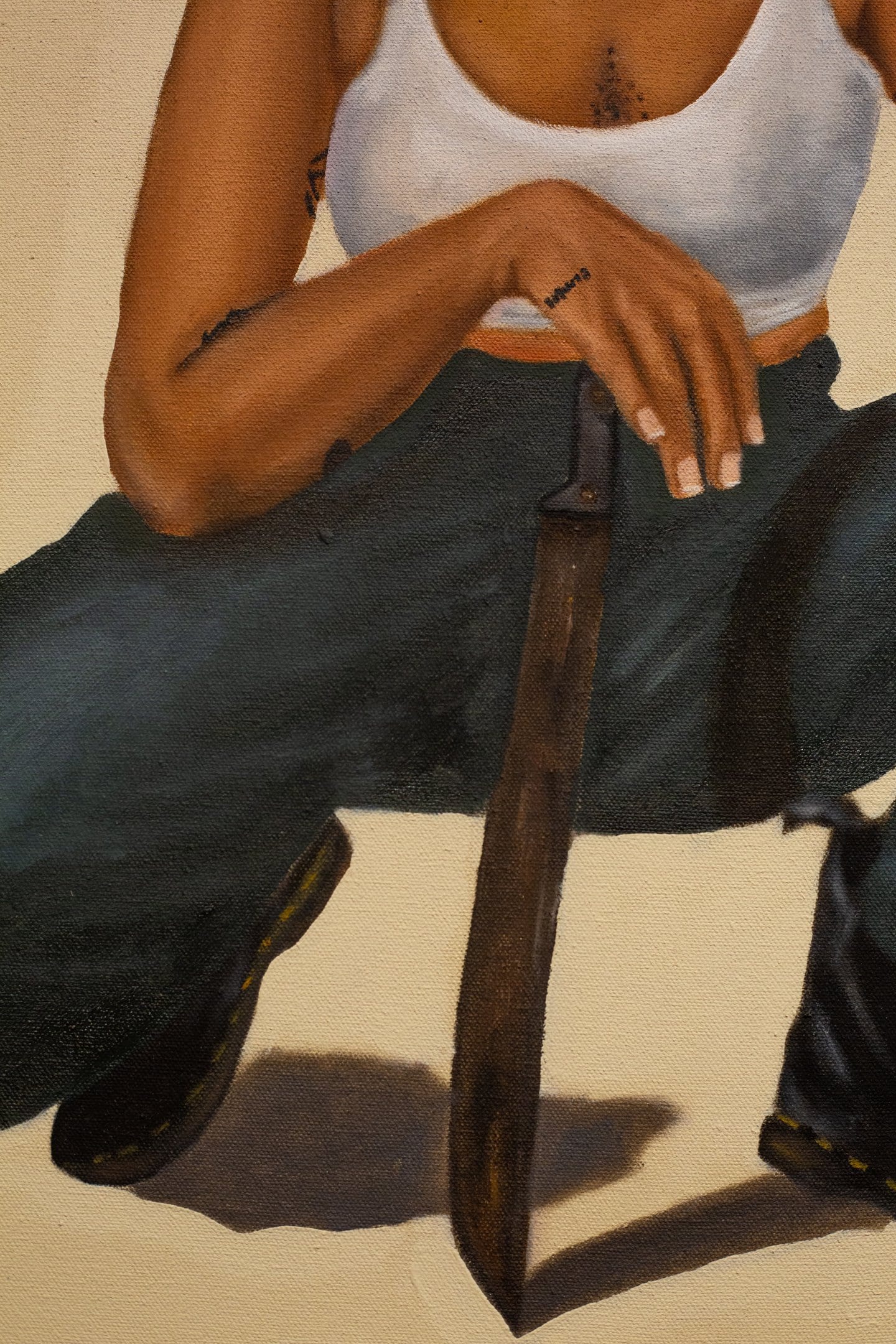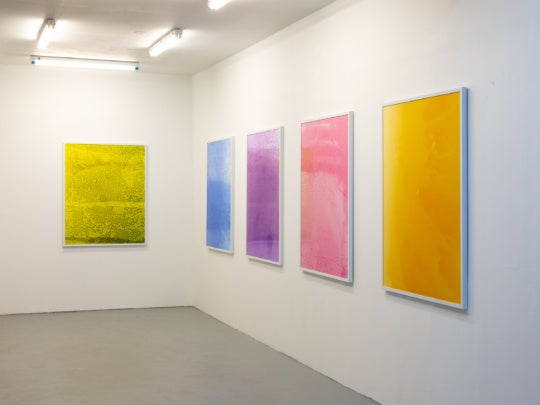
Kole Nichols’ work calls for stillness. On an unstretched canvas covered with layers of moody-hued paint, Nichols repeatedly folds and marks the surface to create faint almost-symmetrical patterns that resemble the navigation systems of maps or stars and architectural elements, such as window panes, doorways, and gates with a distinctly Southern style. The patterns look mathematical and rigidly structured; other times, they are loose and flower-like.
Nichols uses the tension between opposites to create a thoughtful—and perhaps disconcerting—experience for the viewer. The paintings are heavy, dark, and layered, but when presented on the thin, unstretched canvas, an air of fragility occurs. In the architectural works in particular, “exterior” and “interior” switch positions, and then switch back again. Are viewers looking out the window, or looking in? Who are they looking for, or who is seeing them?
Throughout the work, there is an ongoing longing between the concrete here and the theoretical there. Nichols is explicit about the purpose of these gateways and thresholds as personal portals to attempt to reach people and places that either no longer exist or are inaccessible. The use of muted blues, grays, and greens, which also serve to intentionally distract from the literal imagery and amplify an underlying somberness. Again, an opposition effect is achieved. The colors are calming while also nightmare-ish.
In his studio in southwest Atlanta, Nichols spoke about relying on intuition, growing up in Alabama, and embracing imperfections.
EC Flamming: Your work tends to blur the lines between diametric opposites. For example, interiors and exteriors, the spiritual and the terrestrial. What are you hoping to find or achieve in these blurred, hybrid spaces?
Kole Nichols: That dichotomy, between the terrestrial and the spiritual, really is derived from this pursuit of trying to create a pathway between spaces. Specifically thinking about my own ability to revisit parts of myself or moments with my own immediate family and thinking about creating the thresholds to visit those spaces and moments. Having that dichotomy is really important as it clearly delineates here from there. I think that’s something that’s kind of prominent with architecture that allows you in, versus architecture that acts as restrictive in keeping things out.
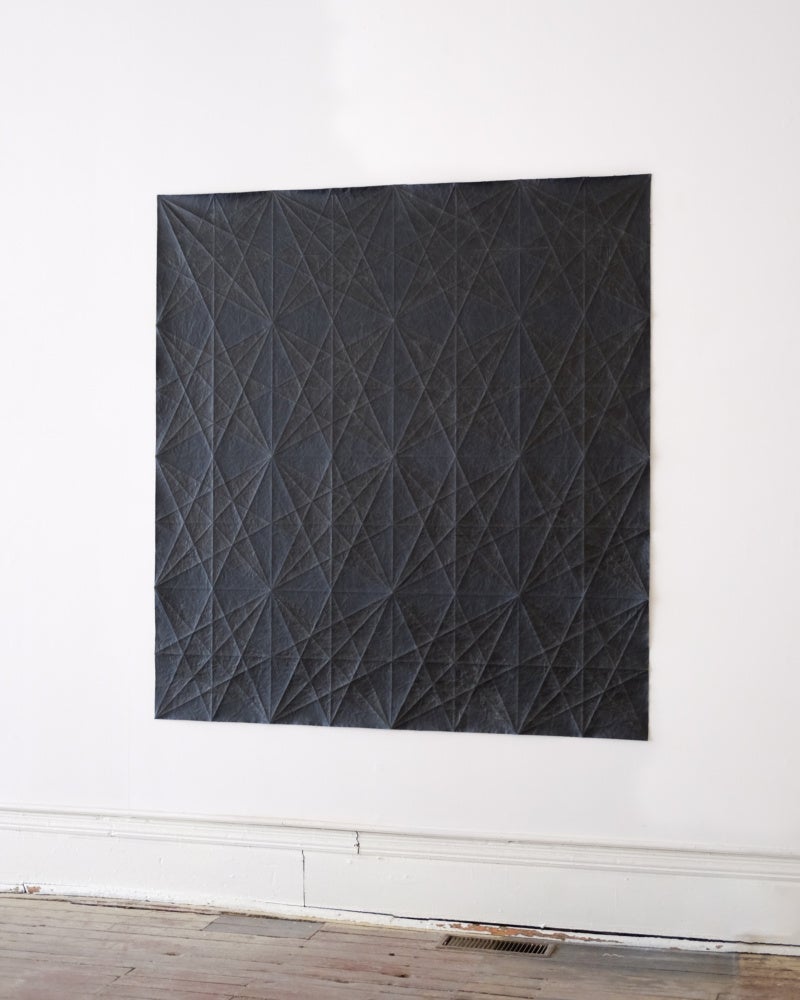
ECF: Could you walk me through your process of making a piece from initial conception to final work?
KN: I work with really broad concepts and ideas first. Is this work going to be one where I’m mapping or graphing or charting a space? Or am I trying to make a work that’s focused on actually depicting these thresholds that exist between spaces? I do a lot of research. There’s an element that comes from my job where I travel a lot and I’m always looking at physical architecture traveling the Southeast, but then also thinking back within my own mind. I’ll sketch and try to understand what I’m going to be depicting.
That’s the rough beginning process, and then I start delving into the specifics. If I’m trying to create an architecture of protection, then I’m thinking about things that keep things out. What are architectures that prevent entrance to a space, what is something that acts as a point of division and what is something that might veil something? I think about the connotations and connections between objects. Whether it’s a veil or a curtain or a door or a window, there’s all of these things that exist within a similar language, but they do very different things.
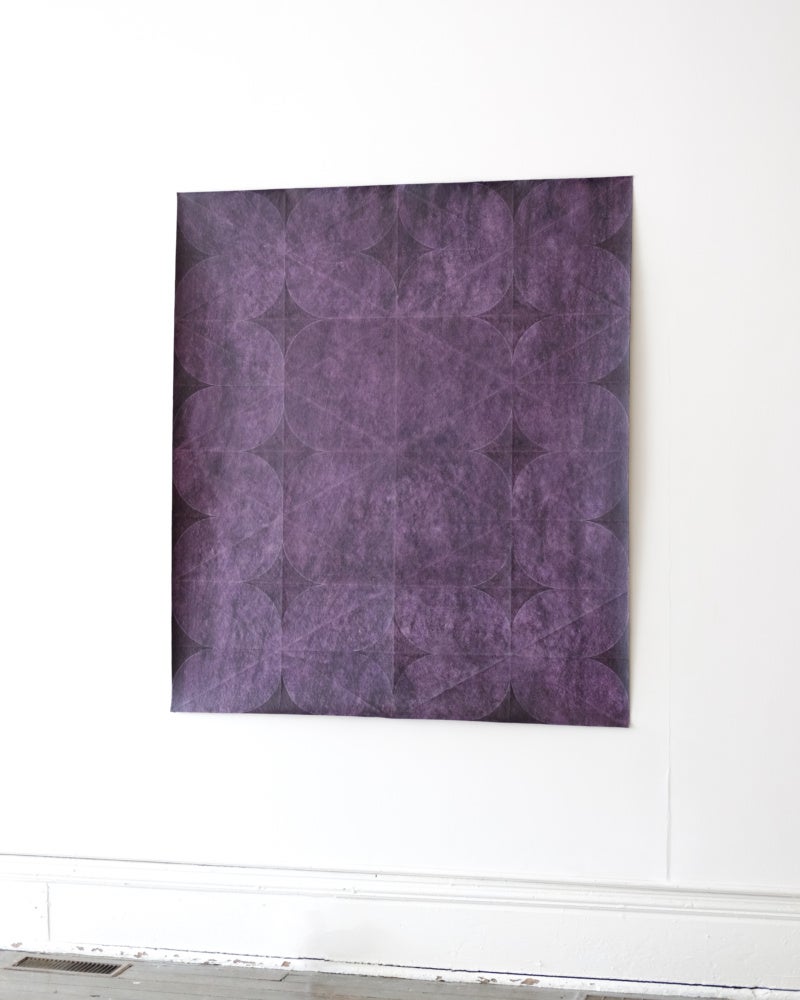
ECF: Having been raised in Alabama and now residing in Atlanta—how have these places influenced your artistic perspective?
KN: My upbringing and the environments that I was in have had a lot of influence on my work. I was born and raised in Florence, Alabama, which is the middle of nowhere. Lots of fields and old Southern architecture, such as farmhouses or corrugated metal storage buildings. A lot of those elements have funneled into my work. I think a lot about objects that would be inside of homes of my own upbringing, but then also about the materiality of objects, like a sheer curtain that acts as a room divider. When you live out in a rural area, if you don’t have the funds to build a room, you subdivide a space with something that cuts it in half. Whether you want the ability to see beyond that thing, that impacts what divides it, right? Lately, moving to a new city and more of a metropolitan space where I’m seeing different types of architecture, too, has been on my mind a lot. There’s an inclusion of different types of facades that I’ll see around some of the historical buildings in Atlanta.
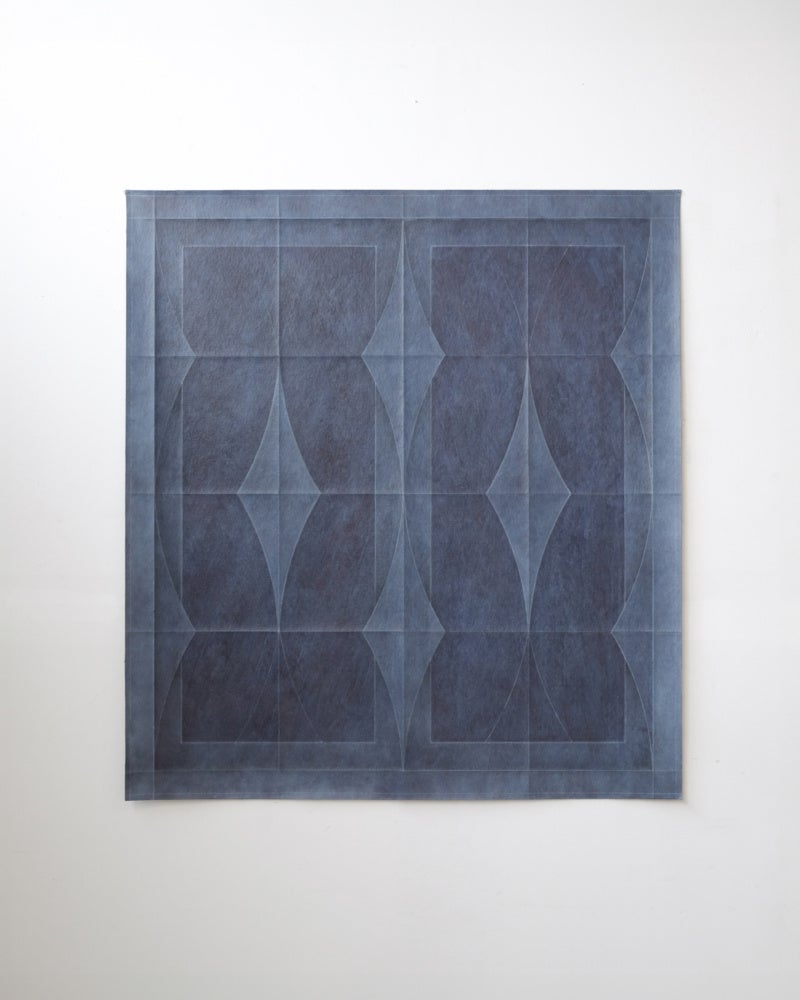
ECF: Themes like cyclical movements, navigation, and mapping appear in your work. What draws you to these concepts?
KN: Those concepts were immediately apparent because I was thinking, you know, people have always found points of centralization and are trying to understand where they are in proximity to something else. I was thinking a lot about stars and the night sky, something that there’s a permanence to its existence, but its placement is always different and changing, right? Depending on the time of year, there’s moments and elements that are fixed, but then there’s also things that are in constant motion. That was a prevalent starting point for mapping and charting, and thinking about how we guide ourselves in relation to the things around us.
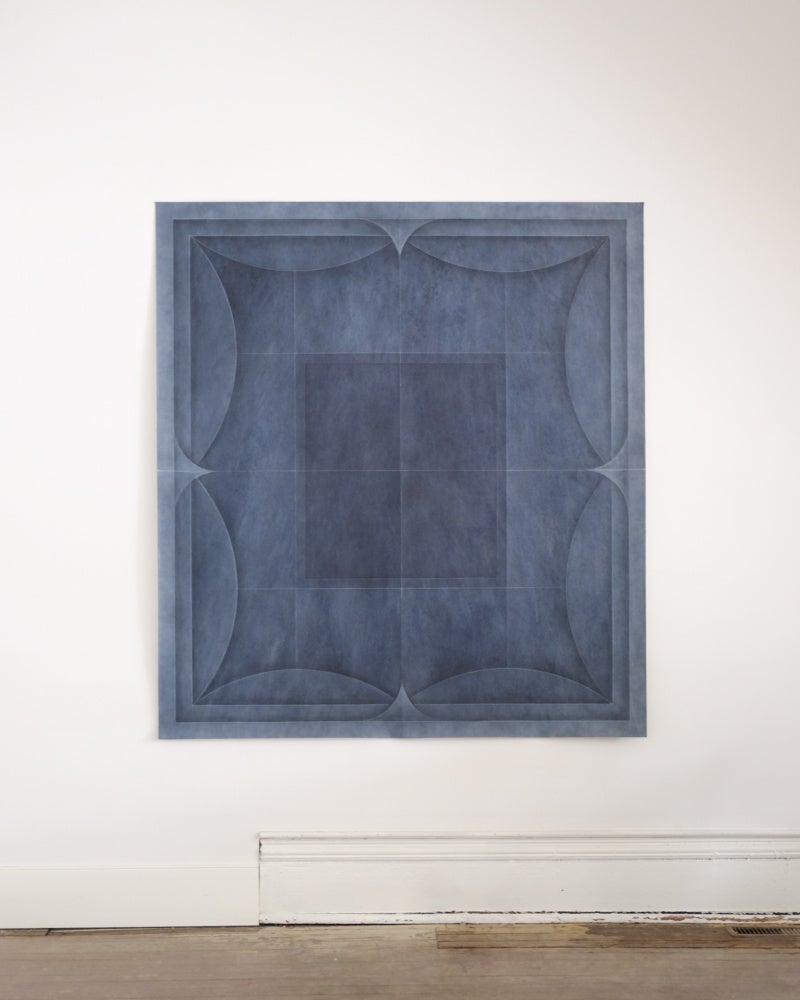
ECF: I want to talk about your use of color. You stick with a very muted palette of grays, blacks, dark purples, greenish grays. How do these tones serve to amplify your themes?
KN: A lot of the colors originated when looking at natural environments. There’s elements that are derived from nature, whether it’s a leaf or a stem or it’s in the sky or the water. I do a lot of observation of color in that manner, and then there’s this shift that happens where they’re put into these unexpected places where I’m creating scientific charts and graphs with intense blues or purples or really muted blacks and greens.
Where there’s definitive architecture that we recognize and when they’re painted in a specific color, it removes the familiarity and becomes distant, and a bit surreal. That became a really pivotal element for the work, just because it’s a bit unusual to be looking through a window or at a door or at a pair of curtains that are just unexpectedly hitting you with a color that doesn’t feel familiar. It feels like you’re entering into the space of uncertainty and it feels like you’re moving beyond what is physical and what is known and pushing beyond into the unknown
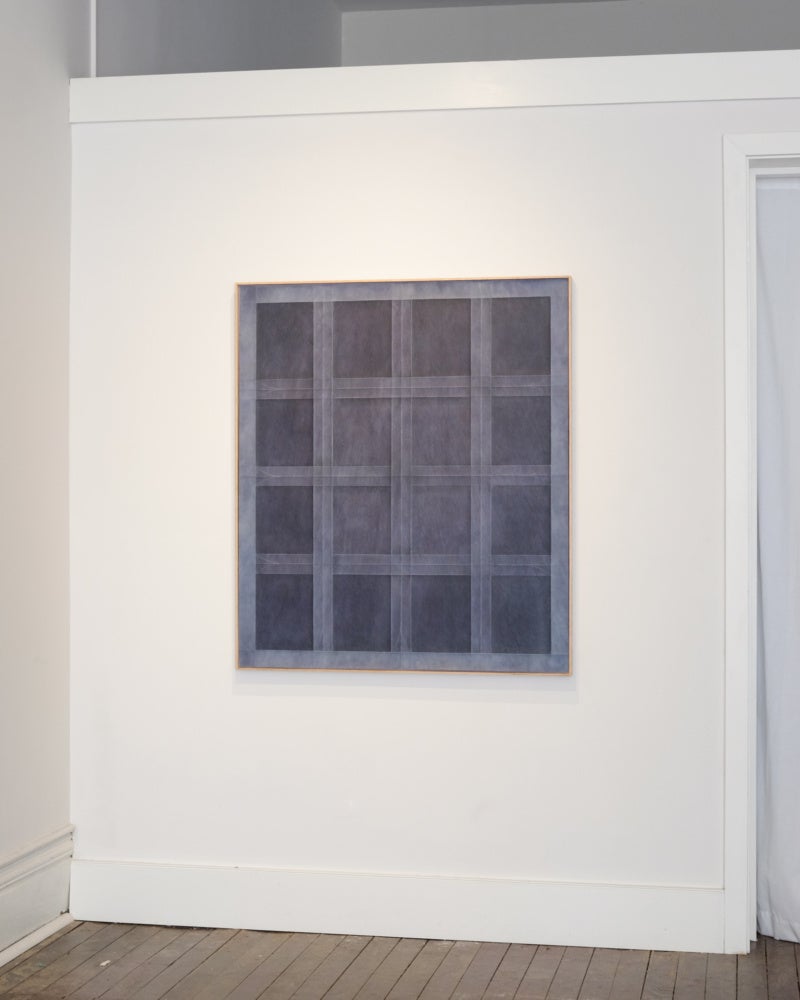
ECF: At first glance, your work appears to be symmetrical or precisely graphed out. There are, in fact, imperfections and asymmetries. What role does imperfection play in your practice?
KN: It plays an everyday role in my practice, if I’m being honest. A lot of the work is extremely intuitive, and there is this call and response between the work and myself where I’m always just figuring it out as I do it. I very much identify with somebody who’s a drawer because I’m building these images line by line to build this large environment. I never have the bird’s eye view of understanding the fullness of the thing before it exists. That imperfection and that quality of asymmetry is present within all the works.
I’m working loosely, measuring and working on unstretched canvases or papers that are torn with a tear bar. Be it the materials I’m working with, whether it’s watered down dyes or viscous paints, it causes seizing, so there’s changes to the surface where the scale changes or portions of the painting shrink so you end up with a measurement that is unequal on one side. Because of that, there has to be the ability to change and adapt, especially when you’re working with rigid structure. Flaws become very apparent very quickly when things are not done in a manner that’s thoughtful. It’s the idea that balance doesn’t always have to mean two parts that are equal. Balance can merely be things that feel as though they fit and that’s where they’re meant to be.
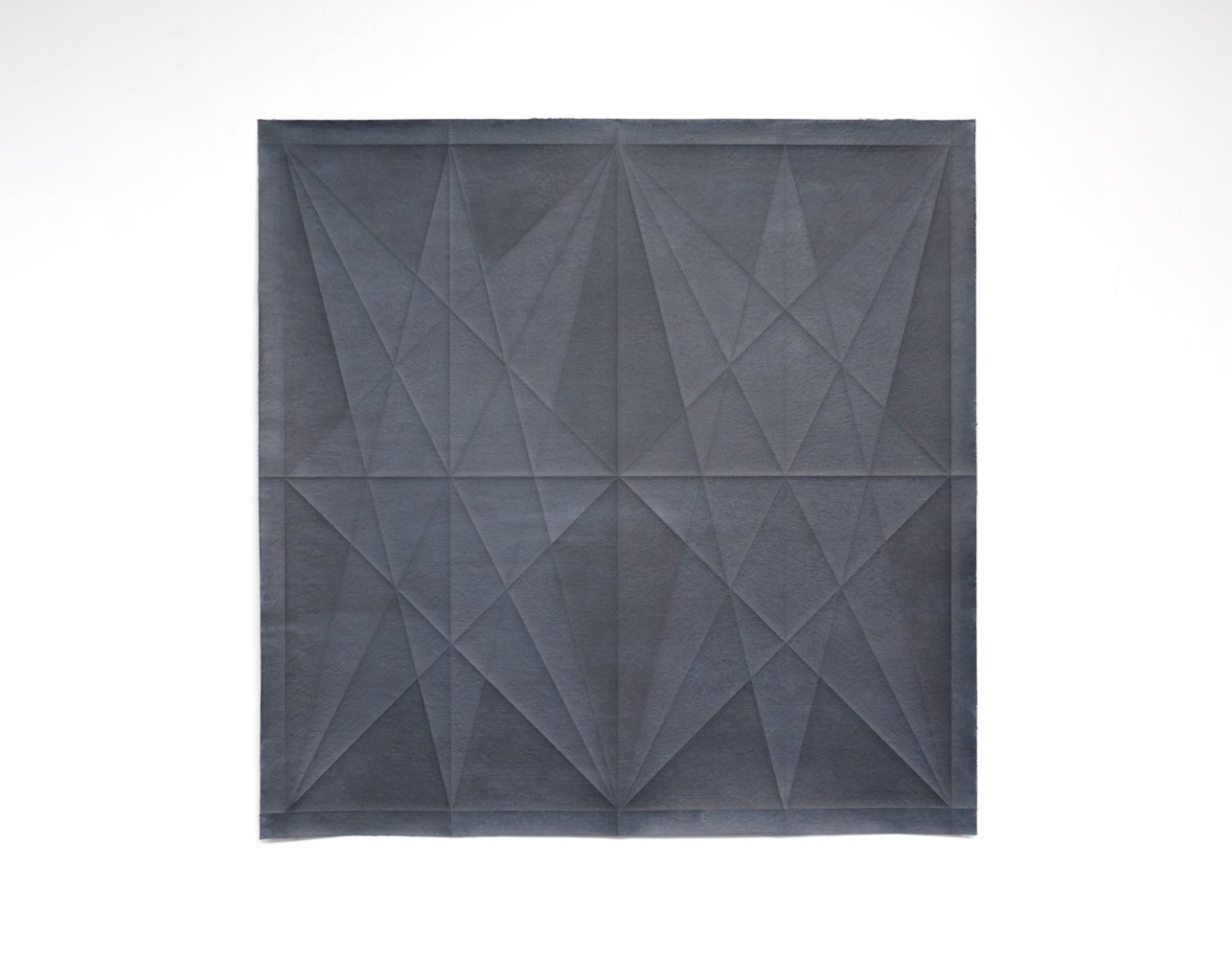
ECF: Are there any new mediums or themes that you’re excited to explore?
KN: I want to try my hand at sculptural stuff and explore the way that these scenes that I’m painting can be conveyed in space. Space is so important to these works, especially when I’m making them on a two-dimensional surface and it’s flat. Pushing beyond the medium of just painting seems like a no-brainer, along with making objects. Tools are really interesting. When we’re talking about graphs and charts and maps, the tool of measurement seems really intriguing.
I always keep doors open within my practice, because I like this ability to be transient and move between things. If I didn’t have that, I wouldn’t have ended up making all these paintings
